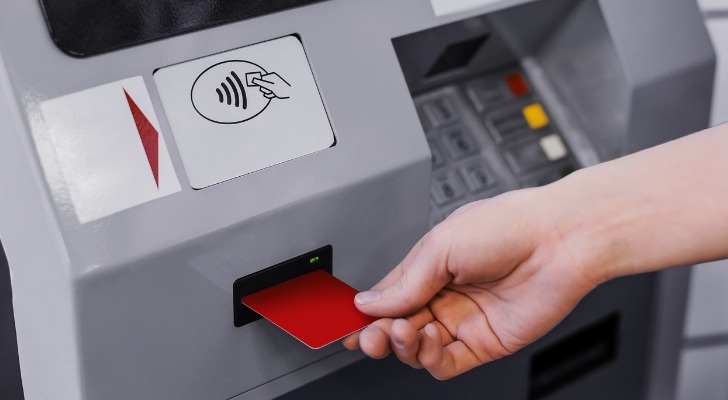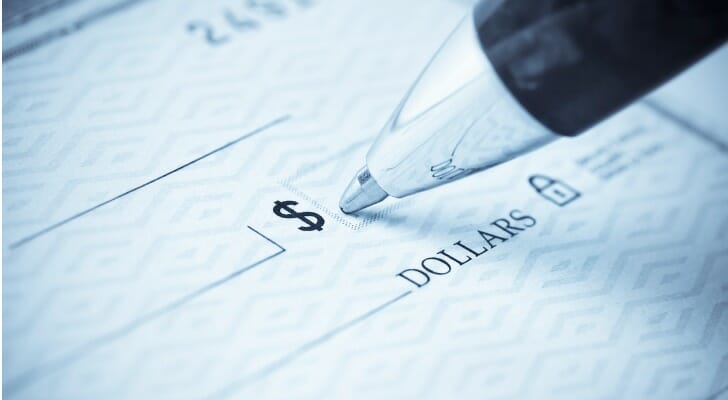 Having a demand deposit account is the first step many people take when they embark on a saving and investing program. Most consumers begin with a checking account and add a savings account or a money market account as time passes. These accounts help you in many ways. They are a convenient way to pay your bills on time and get cash. They help you store money and earn a return on it. They are important to the economy at large since they are a part of the money supply. Here are the facts.
Having a demand deposit account is the first step many people take when they embark on a saving and investing program. Most consumers begin with a checking account and add a savings account or a money market account as time passes. These accounts help you in many ways. They are a convenient way to pay your bills on time and get cash. They help you store money and earn a return on it. They are important to the economy at large since they are a part of the money supply. Here are the facts.
A financial advisor can help you coordinate your checking, saving and investing programs to maximize their efficiency.
What Is a Demand Deposit Account?
A demand deposit account allows you to deposit money and retrieve it at any time on demand. Demand deposit accounts require no advance notice to the bank or other financial institution from which you are going to withdraw your money.
Demand deposit accounts are important because the money available in them is what keeps the economy running smoothly. Consumers use money that is in demand deposits to pay bills, make everyday purchases, get cash and make purchases online. Demand deposit accounts have no maturity date, unlike time deposits. Time deposits, like certificates of deposit, have a maturity date. There are three major types of demand deposit accounts.
Checking Accounts
Checking accounts are the most common type of demand deposit that you can open at a financial institution. There is usually no limit to the number of withdrawals and deposits you can make. They are the most liquid of all accounts, more liquid than savings accounts or money market accounts. The price of liquidity of a checking account is interest income. They seldom pay much, if any, interest. Checking accounts often have a minimum initial deposit. They can be accessed through the use of paper checks, linked debit cards, and electronic funds transfer. Most checking accounts in the U.S. are held at banks or other financial institutions that are insured up to $250,000 by the Federal Deposit Insurance Corporation (FDIC).
There are many different types of checking accounts. There are business and personal accounts. There are no-frills accounts, senior citizen accounts, student accounts, interest-bearing accounts and reward accounts to name a few. The more benefits a checking account offers, the higher the service fees on that account. A share draft account at a credit union is a demand deposit account and just another type of checking account with one difference. Share draft accounts signify that you have some ownership in a credit union. They typically have no service charges.
The conventional wisdom is to keep one month’s take-home pay in your checking account in case of emergency.
Savings Accounts
The lines of what you use a checking and savings account for are gradually blurring. Savings accounts are usually offered by banks as a service to customers. These accounts are interest-bearing and pay interest based on the prevailing market interest rates. Market interest rates on this type of account are low. Bank savings accounts are traditionally used to hold money that you do not intend to use to pay daily expenses. That’s the role of checking accounts. Instead, they are used to store money. Most recommendations are to hold three to six months of take-home pay in your savings account in case of emergency.
Along with savings accounts at your local bank, you can open a savings account online. There are a number of online, high-yielding savings accounts insured, like your local account, by the FDIC. In July of 2021, the FDIC reported that savings account interest rates were around 0.04%.
Most banks do offer NetBanking or MobileBanking with a savings account. They will make it possible for you to send and receive money on a mobile basis. Many banks will also offer Billpay so you can use automatic payments for utilities, credit card payments, and other services. Debit or ATM cards are also provided.
Most banks do not assess service charges on savings accounts. However, you usually have to meet a required minimum balance. If you drop below that minimum balance, you may be assessed a service charge.
Since it is just not feasible or safe to carry around enough cash with you to qualify as savings, a savings account can store your money with very low risk. They are insured by the FDIC just like checking accounts.
Money Market Accounts
Money market accounts (MMAs) are the third type of demand deposit account. If you can leave some money untouched for more than one year, a money market account may be for you. There are two differences between an MMA and a bank savings account. The first is the high minimum balance. MMAs may have a minimum balance of as much as $5,000. Most savings accounts have very low minimum balances.
The high minimum balance on an MMA makes this type of account good for those who are trying to save toward a goal like accumulating enough money to buy a car or make a down payment on a house.
The second difference is that interest rates on MMA’s change weekly. Savings account interest rates do not change that frequently. MMA interest rates tend to be higher than those for savings accounts.
The MMA, which should not be confused with a money market fund, is a demand deposit account that is good for risk-averse consumers. Since it is insured for $250,000 by the FDIC, the MMA is as safe as savings accounts and certificates of deposit. MMAs earn the highest return of all demand deposits. They have no monthly maintenance fees. If you go over the check-writing limit of three checks per month, you usually have to pay a penalty.
MMAs are not quite as liquid as checking and savings accounts, but they are more liquid than stocks and bonds. You do not have to find a buyer in order to retrieve your money.
Why Demand Deposits Are Important
It isn’t feasible for the American consumer to keep their money in cash and pay all their bills in cash, so using demand deposits is the next best thing. Demand deposits are important for another reason. Demand deposits are a large part of our M1 money supply. The level of the M1 money supply determines how much banks have available to loan out to their customers.
The level of demand deposits held by a bank determines how much it should keep on hand as bank reserves. Any money that banks have above their required reserves is their excess reserves. Excess reserves are what banks have available to loan to customers.
The Bottom Line
 When you first start learning how to invest, your first investment may be an MMA. You may store money in that demand deposit account for large purchases that are a year or two away. It also pays to have money to cover emergencies in your checking account and savings account. After you have your emergency money in place and you are well along your way to making any large purchase that you want, then you can consider moving into riskier investments that could yield a higher return like mutual funds, ETFs, stocks and bonds.
When you first start learning how to invest, your first investment may be an MMA. You may store money in that demand deposit account for large purchases that are a year or two away. It also pays to have money to cover emergencies in your checking account and savings account. After you have your emergency money in place and you are well along your way to making any large purchase that you want, then you can consider moving into riskier investments that could yield a higher return like mutual funds, ETFs, stocks and bonds.
The three types of demand deposits are part of the backbone of the American economy since they are part of M1 and are used to calculate bank reserves. Any excess reserves are used to make loans to consumers. Demand deposit accounts are part of the money creation process.
Tips on Saving
- Use SmartAsset’s savings calculator to see how quickly your savings will grow.
- Consider working with a financial advisor as you consider how much of your money to put in demand deposit accounts and how much to put into investment securities. Finding a financial advisor doesn’t have to be hard. If you use SmartAsset’s financial advisor matching tool, you’ll be connected, within minutes, to several financial advisors in your area. If you’re ready, get started now.
Photo credit: ©iStock.com/format35, ©iStock.com/fluxfoto, ©iStock.com/Younes Kraske
